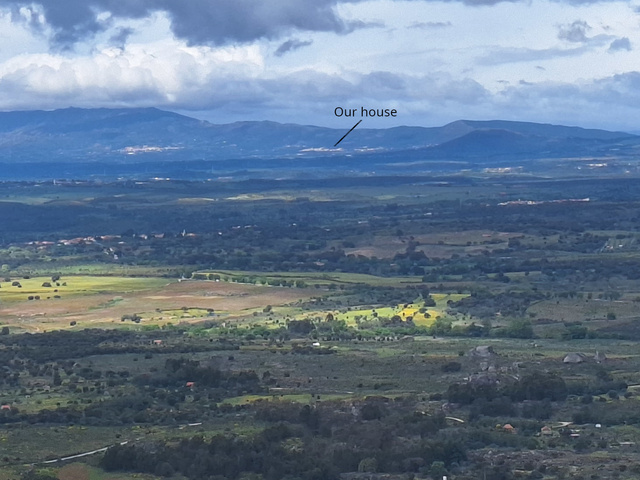With the work on the house coming to a close, we have more time on our hands and we can get out to see the sights.
Recently, we took another trip to Monsanto. This time, driving right into the village where parking is somewhat difficult.
The village sits almost at the summit of a mountain close to the border with Spain. At the top is a castle, which is common along the border between the two countries.
Monsanto has been considered the 'most Portuguese village' and still retains a quaint uniqueness with some houses nestled between and underneath huge boulders as part of the hillside.
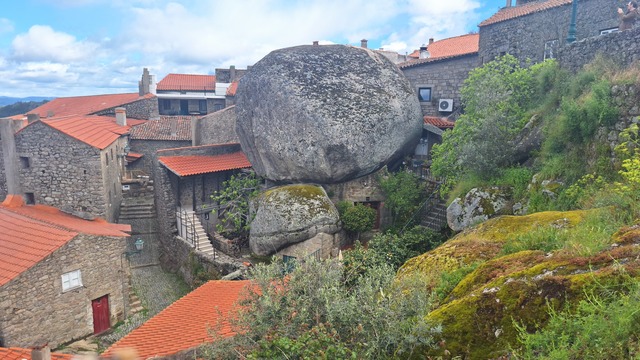
The castle at the top of the village is built onto and into the rock, showing the skill of its creators.
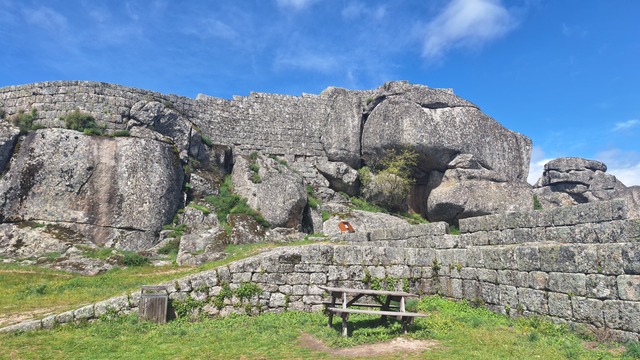
The walls are substantial and give a complete view of the surrounding landscape on all sides.
Here is Janet braving the dizzying heights.
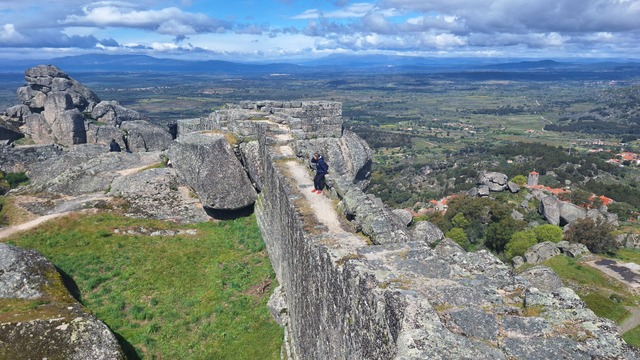
From the castle looking down to Monsanto village, and the town of Relva in the valley further below.

Outside the 12th century Capela de São Miguel are a number of sarcophagi carved into the bare rock.
These were used as graves for the local people and capped with a flat stone.
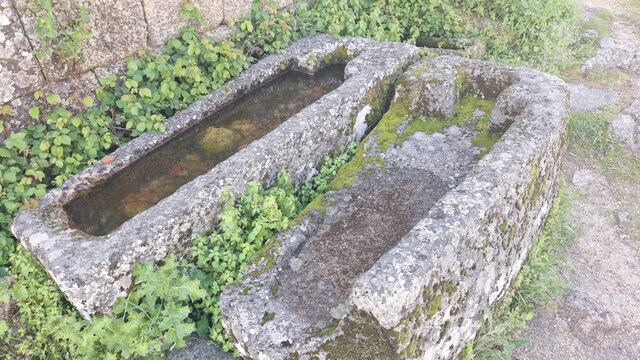
A little further down the track is the 'slab of the thirteen bowls'. It is very likely that they were carved out by a natural process called chemical weathering, but folklore says that these were created and used by a noblewoman to serve soup to the poor.
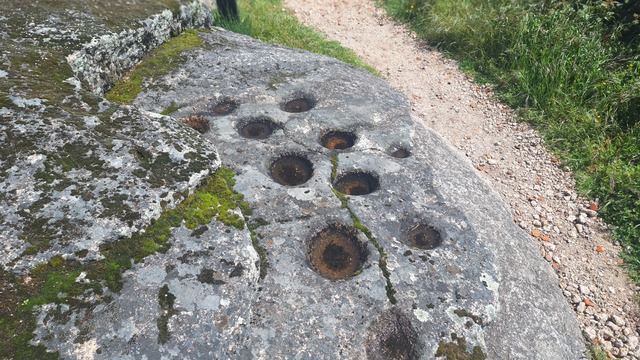
Even further down the trail, we encountered numerous enormous boulders, some with a pathway below.
These freestanding rocks are many hundreds or thousands of tons each.
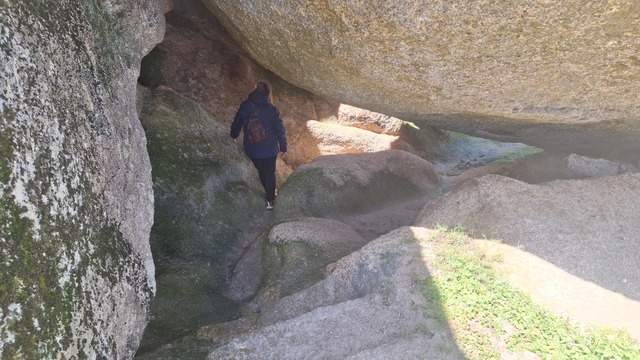
This pebble in the grounds of the castle is only a small example. Luckily, with a beam of sunlight, Janet is strong enough to roll it over.

From the edge of the village looking North-West, we can see the Serra da Gardunha where our village is situated.
The marker shows the approximate location of our house and Vale de Prazeres. We can see Monsanto very clearly from our house.
The smaller village to the right is Cortiçada, and the larger village to the left is Alpedrinha.
